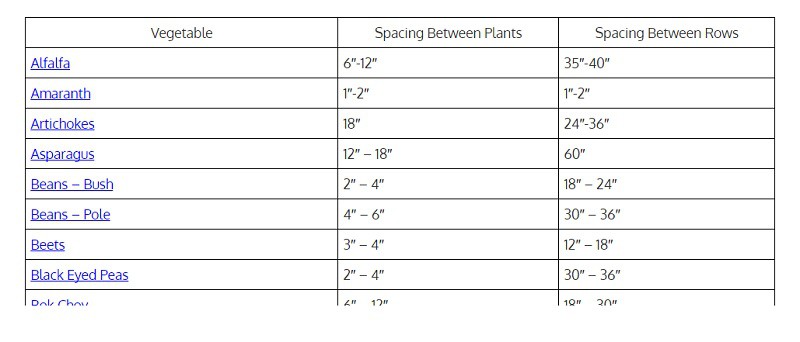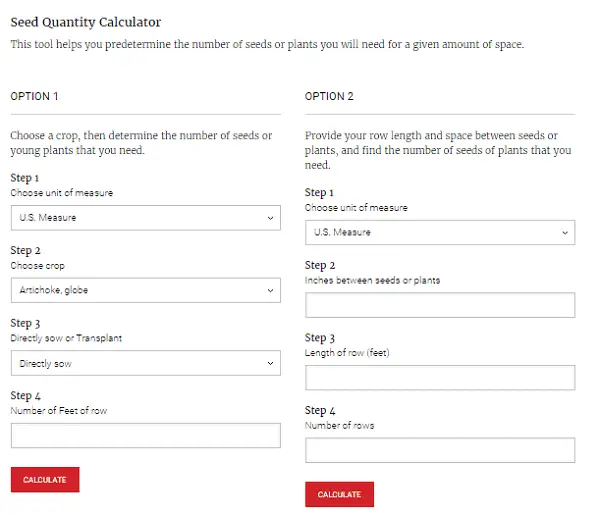The Beginner’s Guide to Plant Spacing
& A Few Do-It-For-You Calculators to Help Get the Job Done Right
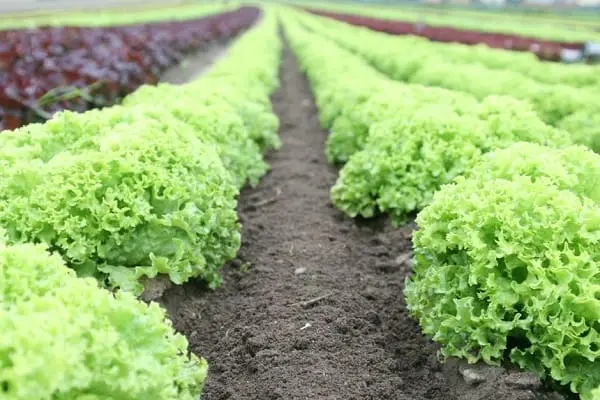
Different vegetables require different amounts of room to grow.
Quick Navigation
YOU HAVE THE SOIL tilled, tested, improved, and ready to go, the next step is planting everything and making sure it all fits into the space you have to work with. Here is what I have learned about plant spacing, including a couple of plant spacing calculators which help do some of the work for you.
It's All About Space
When I first started, I had very little idea about how plants grow and why they need different amounts of space. My first year I planted way too many veggies in too small of a space and ended up with very low yields. This is when I sat down at my computer and started doing some heavy research.
One of the most important things you must understand when planting a garden is that different vegetables require different amounts of room to grow. The possibilities are virtually endless as are the spacing calculations. Every variety you choose should not only be chosen for the end product (the veggies and fruits your family will eat and any flowers you have in mind), but also for their ability to fit into the space you have to work with.
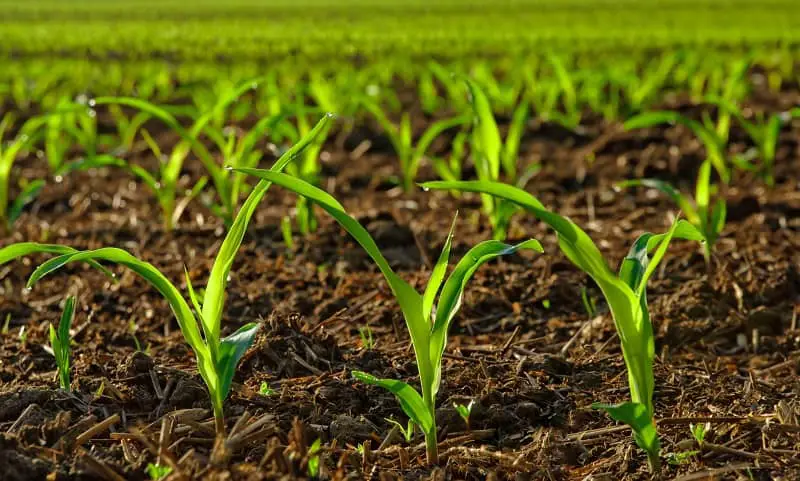
Why is plant spacing so important?
There are in fact several very good reasons why providing just the right amount of space between your garden plants is so important. The right plant spacing will:
- Help to reduce competition for the sunlight that is vital to growth
- Help to conserve water by keeping the soil around the plants shaded
- Help to ensure each plant gets the maximum amount of available nutrients
- Help to reduce the amount of space for weeds in your garden
While you can add more nutrients to the soil in your garden, it is much better for your plants if they don't have to struggle for those that are already there. It is much better for your plants if you leave the right amount of space between them.
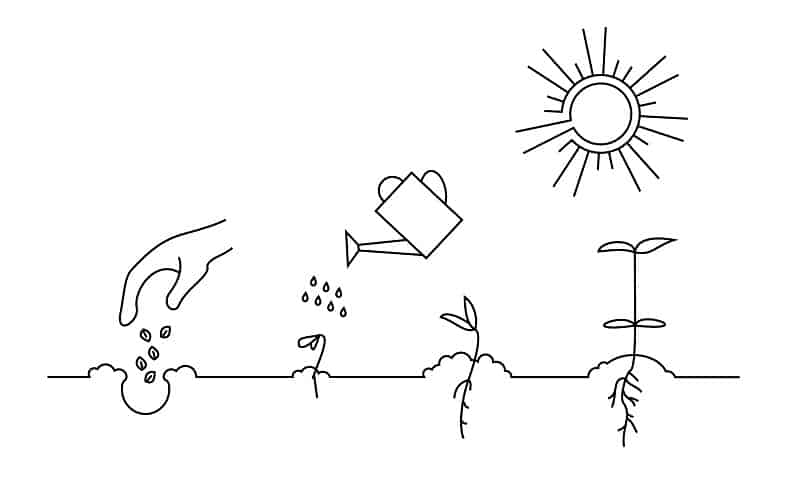
A simple diagram explaining that root growth has roughly the same reach as the the leaves and branches of plant
Your plants are going to leaf out (grow more and bigger leaves) as they grow. These leaves will create a canopy that increases the amount of shade that reaches their lower sections. The proper amount of plant spacing helps to ensure the entire plant receives plenty of healthy sunshine. In turn, this will help to ensure you have robust plants that bear lots of fruit (including veggies).
Shade may help to conserve water during the heat of the day, but if you plant everything too closely together, the plants will end up fighting for any available water. Ultimately, you have to come up with a perfect balance between spacing and how much water you can afford to use to keep your plants healthy.
The one place you cannot see the competition between your garden plants is underground where the roots are constantly expanding in their never-ending search for water and nutrients. If you don't leave enough room for the root structures to spread out, you will end up with stunted plants that produce very little in the way of edible fruits or veggies.
So How Do I Know What the Correct Plant Spacing Is
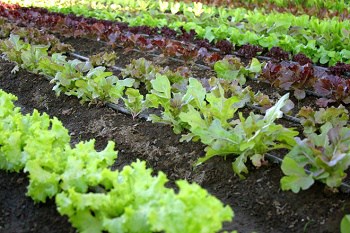
When you have at least some idea - here are a few suggestions - of what you want to grow in your garden along with how much area you have to work with, it's time to sit down and draw up a plan of action. There are literally hundreds of suggestions for correct plant spacing.
However, to avoid confusion the best thing you can do is to follow the instructions found on the back of the seed packet or on the tags that come with any starter plants you buy.
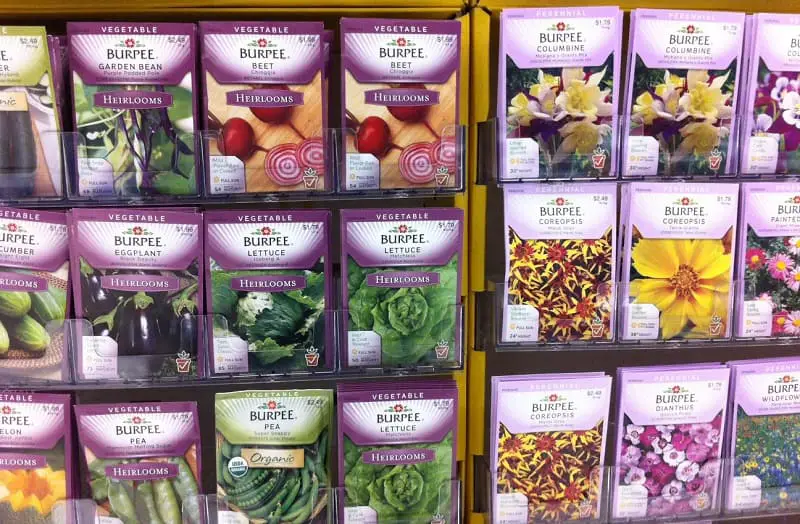
Image Courtesy of ParentingPatch (Own work) [CC BY-SA 3.0]
Planting Seeds
It is important for you to follow the information on the seed packs when planting your seeds for the best results. Although if you cannot find any information, some gardeners use the following method as a rule of thumb:
According to the horticulture department at North Carolina State University, you should plant seeds no deeper than 2 to 3 times the maximum diameter of the seeds. The seeds should then be covered with a light layer of soil that has been lightly stamped into place.
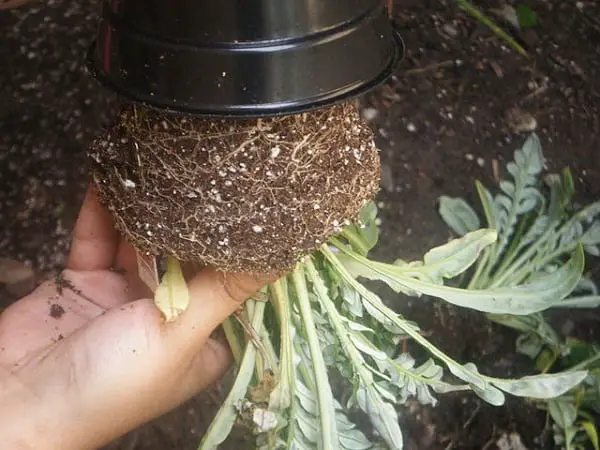
Image By Lyn Lomasi – Own work, CC BY 3.0
Planting Starter Plants
With plants that come in peat cups, cubes, or plastic pots filled with soil, the job is a little different. You have to dig individual holes for each plant. The holes should be wide enough to accommodate all of the peat or soil and deep enough that the top of the peat or soil will be just below the level your garden soil. This helps to ensure they remain firmly in place and that the roots have a chance to spread out properly.
One thing to keep in mind, as you remove the plants from the containers use your fingers to gently spread the root structures out. Some gardeners call this teasing the roots out. Doing this will help the roots to spread out into the soil more quickly and leave you with healthier plants.

Another Important Trick to Remember
If you are planting starter plants that were initially grown indoors, you should acclimatize the plants before permanently placing them in your garden. I usually start setting them out during daylight hours where they can get some sunlight and some shade. Then I bring them back in at night if it is going to get chilly.
Doing this gives them time to get used to being outside. I have found that simply sticking them out in the garden results in far too many lost plants. Once they are planted, depending on where you live, you may want to provide them with a little shade for the first few days as they get used to being outside or once again, you may end up with more than a few dead plants.
How Should I Lay Out My Garden
If you were to gather together a group of experienced gardeners and ask them, "What is the best way to plant a garden?", you are likely to hear more answers than you are prepared for. I did my time in the trenches and it seemed as if every one of my gardening friends had a different answer. Some liked rows, some preferred the "square foot" method, others like intensive gardening, and then there is always raised bed gardening to consider.

Why Row Planting Is Not Always the Best for Gardens
The traditional way to plant a garden has been to plant each type of vegetable in long rows. You might think this is a good thing, but there are a couple of very good reasons why this may not always be the best choice:
- Waste of space: No matter how you plant your rows, you will always end up with a lot of wasted space between each row.
- More maintenance: Not only do you have to weed between the plants, you also have to weed the spaces between the rows, making more work than necessary.
- More water consumption: No matter what type of plant spacing you use, you end up watering the space between the rows. This wastes a lot of water.
- Not all plants can be put in rows next to each other for reasons such as shade and room to spread out.
What about Square Foot or Triangle Gardening?
Square foot and triangle gardening are both forms of intensive gardening. These methods involve planting and raising your plants in compact raised or ground level beds. Using this method allows you to grow a wide variety of crops in a relatively small area. In essence, you map out your garden and then laying it out in a grid on paper.
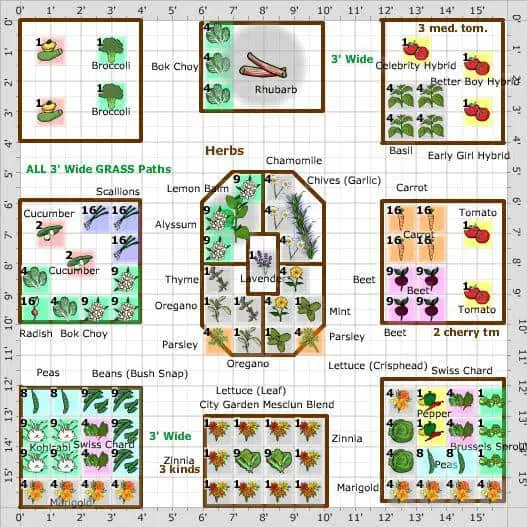
This is what the typical square foot garden map might look like, You can do the same with triangles depending on how much space you have to work with. In your garden it might look like this:
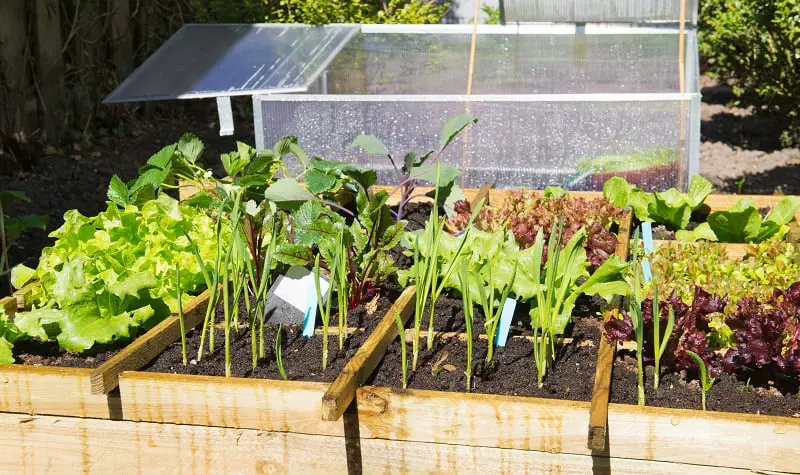
Or this if you prefer raised garden beds:
There are several major advantages to this type of intensive gardening:
- Your garden will take up less space due to the efficient use of every square foot of garden space.
- Your garden will require less maintenance such as tilling, weeding, composting and watering.
- Your garden will need up to 80% less water than traditional row gardening.
- Easy weed and pest control as small sections are easier to protect from insects and the compact nature of the style leaves very little open soil for weeds to grow in.
- Higher yields are considered normal with this type of gardening.
Planting Close Together
If there is one thing I have learned over the years, it is that intensive gardening, or planting close together has a number of advantages. It will allow you to maximize the productivity of every inch of available garden.
When your plant spacing is very close, you leave very little room for weeds to grow. Not only do they have little in the way of available soil to work with, but as your vegetables grow and create their own shade, this will help to choke out any sunlight reaching the ground and prevent weeds from growing. You can also use landscaping fabric to prevent weed from growing.
Planting your garden in this manner also helps to reduce the amount of water needed to keep your garden growing. The plants still need the same amount of water to grow, the big difference is that your soil does not lose nearly as much through evaporation during the hot summer days. You may find you can do the bulk of your watering using drip irrigation rather than a wasteful sprinkler system.
Not only is this type of irrigation better for your plants because it put the water right at the roots where it's needed most, but it will make a big difference in your monthly water bill. It will also help to prevent problems like root rot as the soil should never become over-soaked.
Plant Spacing Calculators
If you have never planted a garden before and have no real idea how to calculate proper plant spacing, you may find that a plant calculator can help make the job a lot easier. I personally used one for the first few years until I got the hang of it. Here are a few of the best plant spacing calculators I could find, all you have to do is fill in the information and the calculator will tell you how many plants will fit a specified area.
- Helps work out plant spacing in grid form. You will need to know how much space between each plants and your total square footage.
- Spacing guide for vegetables.
- Most comprehensive calculator. Will tell you how much space you need inbetween plants for different varieties of vegetables. Also will calculate how many plants if you know the spacing and size of your plot (also in rows).
Important Notes
The simple fact is that no matter how much information you read, there is always going to be a certain amount of experimentation. There are a few important things you need to know and a few extra tips that I have found useful along the way.
- When planting seeds that are only going to be covered by a thin layer of soil, be sure to water them as soon as they are planted and keep the soil damp for the first few days. This will keep the seeds from being blown away by the wind. It will also keep them from being eaten by birds.
- If you are going with square foot gardening, be sure to leave enough room between each section so that you have room to walk between them and so that you can weed the sections and otherwise maintain them.
- Use mulch, landscaping cloth, or old newspapers to help keep moisture in and weeds out.
- Plant tall crops like corn, pole beans, even tomatoes and cucumbers on the side of the garden furthest from the sun so they don’t leave your other crops in the shade all day long.
- Weeds will compete with your crop plants for water and nutrients, be sure to keep your garden weeded to give your plants the best chance for growth.
Here are a couple of great videos I found on getting started planting your garden:
10 Ways to Make your Vegetable Garden More Productive in 2017...and Beyond!
How to Grow a lot of Food in a Small Garden - 9 EZ tips
Square Foot Gardening (SFG): Growing More in Less Space
And In The End
Of all the things you can do to help ensure your garden produces a bountiful harvest, is to start it out right. This means making sure your soil is perfect, you have plenty of sun and shade, the right amount of water and all of your plants are properly spaced. While it might not be rocket science, there is, as I found out, a science to creating the perfect vegetable garden. I hope that all of the above information and the mistakes along the way I have made help you to create the garden of your dreams.
If you have enjoyed reading about plant spacing and my plant spacing guides please let me know. Also, reach me if you have anything you'd like to share.
Let everyone know you enjoyed reading this on Facebook, Twitter, and Pinterest.
Thank you for reading this.
Related Articles:


